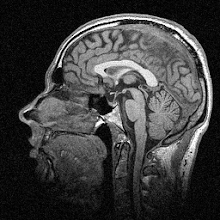If you recall, the central thesis of the paper is that we over-correct for deviations in our stride length and stride time that draw us away from the line of constant velocity (the Goal Equivalent Manifold). The evidence for this was a calculation of a parameter labeled α that shows the persistence of a particular variable, i.e. how likely it is to be corrected. This is where the trouble starts.
Unknown to me at the time I wrote the post, the calculation of α only works given a certain set of constraints. For example, imagine that you have a matrix that you wish to invert. (For those who don’t know about matrices: not all matrices are able to be inverted.) So you write a piece of code that inverts the matrix, but in such a way that it never crashes and always returns an answer. Now, if you feed to program a matrix than is non-invertable, it will give you an answer – but that answer doesn’t mean anything. And unfortunately, the calculation of α in this paper has much the same problem.
What this means is that the evidence for the claim the authors are making – that overcorrection is the best way to model human walking variability – is suspect. It’s especially interesting when you look at one of the figures which is used to show that a simpler strategy for treadmill walking, absolute position control (i.e. trying to stay at the same spot on the treadmill). This figure (Figure 4C in the paper) shows the calculation of α for the position on the treadmill:
Persistence for position on treadmill
The value of α here is greater than 1 and goes up to 1.5, so the authors argue that this means there is a high persistence and therefore participants do not correct for absolute treadmill position. But α is undefined over data like this, and it doesn’t go higher than 1! It looks like the problem I outlined above – you get a number out of the program, but the number doesn’t actually mean anything.
So not only might the central claim be undermined, but the contention that we don’t control absolute treadmill position is also questionable. Something to be careful of when looking at papers is always to make sure the methods make sense – I assumed that these methods were adequate for the task they were used for, and apparently so did the reviewers! It is of course possible that the whole thing is fine, but as my colleague Frederic Crevecoeur points out, they could have done a few more tests that demonstrated the validity of these calculations, which would make these points moot.
Regardless of whether the central claim is correct, it is admirable that this is the first paper to really attempt to use stochastic optimal control models to look at walking. Apparently they have more in the works; I look forward to seeing it!
--
Dingwell JB, John J, & Cusumano JP (2010). Do humans optimally exploit redundancy to control step variability in walking? PLoS computational biology, 6 (7) PMID: 20657664
Image copyright © 2010 Dingwell, John & Cusumano


The claims regarding "persistence" or "anti-persistence" based on alpha values is reasonably more immune to the "black-box" approach problem that you have pointed. It seems it is less immune to claims on "Long range correlations", which the authors have not made in this paper. To me, the central point of the paper, which is a strong criticism of the MIP (Todorov & Jordan 2002), is still very valid. Their claims on OVC model is slightly less valid.
ReplyDeleteVaradhan SKM